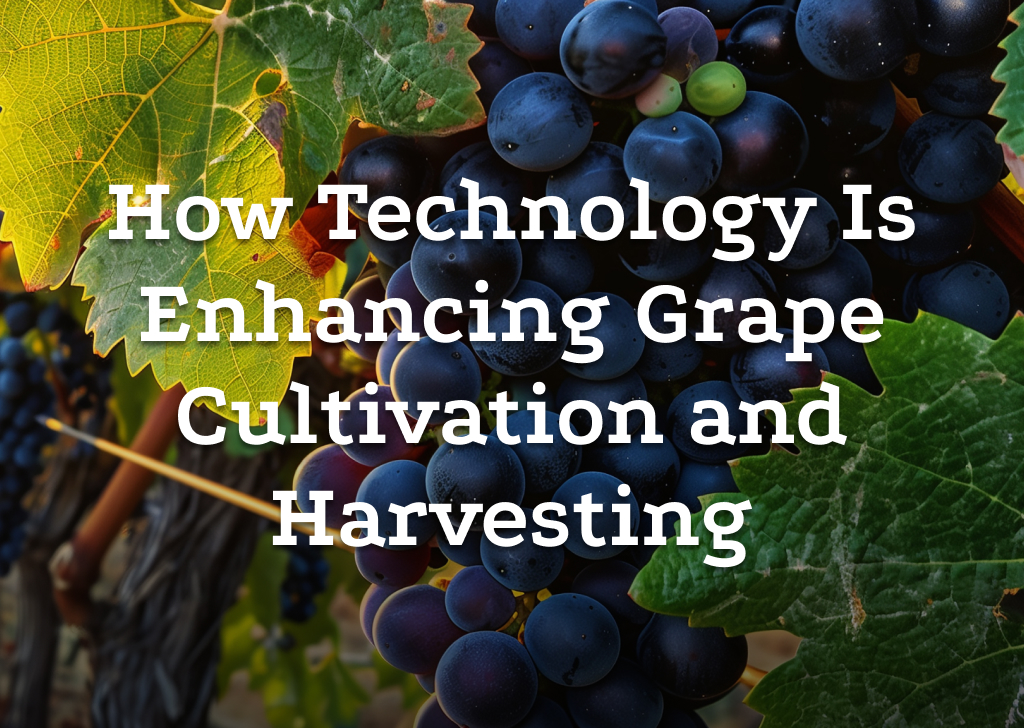In recent years, technology has transformed nearly every corner of the winemaking process, especially in grape cultivation and harvesting. Traditionally rooted in manual labor and intuition, the industry now benefits from cutting-edge tools that offer unprecedented precision and control. With these advancements, winemakers are able to optimize vineyard operations, enhance grape quality, and adopt more sustainable practices. Here’s a closer look at how technology is reshaping grape cultivation and harvesting.
Precision Agriculture: Fine-Tuning Every Vine
One of the most revolutionary changes in viticulture is the adoption of precision agriculture. Using a combination of GPS, satellite imagery, and smart sensors, vineyards can now be managed with exceptional accuracy. These technologies allow winemakers to monitor variables like soil composition, moisture levels, and vine health across different sections of the vineyard.
GPS-guided equipment is used for planting and maintaining the vines, ensuring each plant is positioned to receive optimal sunlight, nutrients, and water. These systems improve grape yields and help vineyards become more sustainable by minimizing resource waste. In addition, drones equipped with multispectral cameras provide aerial surveys of large vineyard areas, spotting problem zones—like those affected by pests or disease—before they become visible to the naked eye. This real-time data helps winemakers take proactive steps to maintain the health of their vines without blanket treatments, reducing unnecessary use of pesticides.
Smarter Irrigation: Precision Watering
Water management is critical in grape growing, and mismanaging irrigation can lead to poor grape quality or wasted resources. The introduction of smart irrigation systems allows vineyards to use water more efficiently. These systems employ soil moisture sensors and environmental data to determine precisely how much water each section of the vineyard requires.
Rather than relying on traditional, uniform watering schedules, smart irrigation adjusts water distribution based on the immediate needs of the vines. This conserves water—particularly in regions prone to drought—and ensures that the grapes receive the optimal amount of hydration. In some cases, these systems can be programmed to factor in weather predictions, delivering water in anticipation of dry conditions. The result is a more balanced and efficient vineyard that supports healthy vine growth.
Data and AI: A New Era for Decision-Making
As the wine industry becomes more data-driven, the role of artificial intelligence (AI) and data analytics is growing. These technologies analyze vast amounts of information gathered from sensors, drones, and weather stations to help winemakers make better decisions.
One key application is the use of predictive analytics to determine the best time to harvest grapes. By monitoring grape maturity, sugar levels, and acidity, AI can recommend the ideal harvest window to achieve the desired flavor profile. This precision helps winemakers ensure consistency in wine quality, regardless of external conditions.
AI systems are also used to detect early signs of disease or vine stress. By analyzing historical data and real-time information, AI can spot patterns that indicate potential issues. This allows vineyard managers to intervene early, applying targeted treatments only where necessary, which helps to reduce chemical use and promote sustainability.
Mechanical Harvesting: Speed Meets Quality
In the past, hand-harvesting was often seen as the only way to ensure top-quality grapes. However, modern mechanical harvesters have made great strides in both efficiency and gentleness, providing an attractive alternative for many vineyards. These machines can cover large areas quickly, making them especially useful in large-scale operations where time is critical.
Today’s harvesters are designed to gently shake the vines, allowing only the ripest grapes to fall into collection bins while leaving unripe grapes and other debris behind. Some are even equipped with sorting mechanisms that further refine the selection process, ensuring that only the best grapes make it through to production. Additionally, mechanical harvesting can be done at night, which is crucial for preserving the grapes’ acidity and freshness, as cooler temperatures help protect the fruit during the harvest.
Technology and Sustainability: A Symbiotic Relationship
Sustainability is a growing concern in the wine industry, and many of the technological advancements being adopted are aimed at reducing the environmental footprint of grape cultivation. Remote sensing technologies, for example, allow vineyard managers to monitor their crops without frequent physical intervention, reducing the need for fuel and workforce.
Similarly, smart pest management systems can identify the exact areas of the vineyard that need treatment, allowing winemakers to apply pesticides only where necessary rather than spraying the entire vineyard. This not only minimizes chemical use but also helps maintain the vineyard’s ecosystem. By embracing these technologies, the wine industry is moving toward a future where sustainability and efficiency go hand in hand. Grapes can be grown with fewer resources, less environmental impact, and improved overall quality.
The Future of Grape Growing and Harvesting
As the wine industry continues to evolve, the influence of technology on grape cultivation and harvesting will only grow. Precision agriculture, smart irrigation, AI-driven decision-making, and mechanical harvesting are just the beginning. The future holds even greater potential for technological advancements that will improve the quality of the wines we drink and the sustainability of the processes behind them.
For wine lovers, this means access to wines that are crafted with greater consistency, complexity, and care for the environment. As winemakers adopt these innovations, they blend tradition with modernity, ensuring that the craft of winemaking and the land it depends on are preserved for future generations.
